Prepare for a captivating adventure through time, as we dive into the fascinating history of Toby mugs. These beloved vessels, with their jovial expressions and wide-brimmed hats, have graced tables and collectors’ shelves for centuries. From their humble beginnings to their enduring appeal, we’ll explore the craftsmanship, cultural impact, and the colorful characters who brought these iconic mugs to life. So, grab a cozy seat, pour yourself a refreshing beverage, and let’s raise a tankard to the past as we embark on this enchanting journey into the world of Toby mugs.
History of Toby Mugs
Ever stumbled upon a quirky little jug shaped like a jolly old chap enjoying a pint? You, my friend, have likely encountered a Toby Mug! These charming pieces of pottery have a history as rich and fascinating as the ale they were often designed to hold.
From Taverns to Treasures: The Rise of the Toby
Our story begins way back in the mid-1700s, when Toby Mugs first popped up in English taverns. Imagine a time when bars were bustling hubs of social life, filled with boisterous laughter and the clinking of tankards. Toby Mugs, originally known as Toby Jugs, may have been inspired by a popular fictional character named Toby Fillpot, a larger-than-life figure known for his love of a good time (and a good drink!).
Another theory suggests that their design might have been influenced by the infamous “Low Toby” highwayman, a notorious robber known for his cunning and, you guessed it, his fondness for pubs. Regardless of their precise muse, these early Toby Jugs quickly became associated with good cheer and camaraderie, capturing the spirit of tavern life in ceramic form.
As the decades passed, Toby Jugs began to transition from purely functional drinking vessels into sought-after decorative items. People started collecting them for their craftsmanship and whimsical charm, and their popularity soared throughout the 18th and 19th centuries.
The Golden Age of Toby Mugs: A Staffordshire Story
The epicenter of Toby Mug production was Staffordshire, England, a region renowned for its pottery prowess. From the late 1700s to the mid-1800s, Staffordshire buzzed with activity as skilled artisans churned out Toby Mugs in all shapes and sizes.
This era was a sort of pottery renaissance! Master potters like Ralph Wood, Whieldon, and Walton became synonymous with exquisitely crafted Toby Mugs, their names whispered with reverence among collectors. These weren’t just your average mugs; they were intricate works of art, brimming with detail and personality.
A Toast to the Details: What Makes a Toby a Toby?
So, how can you spot a Toby Mug in the wild? Well, picture this: a seated, jovial gentleman, usually sporting a tri-corner hat and dressed in the finest 18th-century garb. He’s often depicted with a frothy mug of beer in hand or a pipe dangling from his lips, capturing the indulgent spirit of the time. It’s like holding a tiny snapshot of 18th-century merriment!
But Toby Mugs are more than just jolly figurines. They offer a fascinating glimpse into the evolution of drinking vessels, showcasing influences from ancient mugs and beer steins. It’s a reminder that our love affair with mugs and the rituals surrounding them stretches back centuries.
A Timeless Appeal: Toby Mugs Today
You might think that Toby Mugs, with their old-world charm, would be relegated to dusty antique shops. But you’d be wrong! They’re experiencing a resurgence in popularity, with collectors and enthusiasts alike captivated by their history and quirky appeal.
There’s something undeniably endearing about these little fellas, a reminder of simpler times filled with good company and hearty laughter. And so, the Toby Mug lives on, a testament to the enduring power of craftsmanship, tradition, and a good old-fashioned pint.
What is the origin of Toby mugs?
So, we’ve talked about how popular these Toby mugs became, but where did they even come from? To understand their origins, let’s journey back to England in the mid-1700s. People were enjoying their ale and celebrating life’s simple pleasures. It was during this time that Toby jugs, the predecessors to our beloved Toby mugs, emerged. These jolly, rotund jugs, often with mischievous grins, were like the life of the party. One theory suggests they were inspired by a legendary drinker named Toby Fillpot – a character who certainly knew how to have a good time!
The name “Toby” itself is a bit of a mystery. Some believe it was a nod to the jovial and “fun-loving” Sir Toby Belch from Shakespeare’s Twelfth Night. Others think it was inspired by a real Yorkshireman nicknamed “Toby Fillpot,” a man known for his impressive capacity for ale.
These Toby mugs weren’t just a random English invention. Their design actually evolved from the popular Dutch Delft jugs of the time. Around the 1760s, Staffordshire, England, became the Toby jug hub. A skilled potter named Ralph Wood from Burslem Pottery played a significant role in their rise to fame. He began crafting these mugs based on a portrait of Henry Elwes, a man who, legend has it, was the original “Toby Fillpot.”
Here’s a recap of what we’ve learned so far:
- Toby mugs have been around for centuries! People have been collecting and enjoying these charming mugs for generations, and their appeal shows no signs of fading.
- They offer a glimpse into the past. Toby mugs remind us of a time when people weren’t afraid to enjoy a good drink and a good laugh. They’re like little time capsules of 18th-century English culture.
- These mugs are more than just dishes; they’re art. Through the skill of potters like Ralph Wood, Toby mugs became highly detailed and sought-after collectibles.
This is just the beginning of the Toby mug story. There’s so much more to uncover about these fascinating pieces of pottery. If you’re eager to learn more, be sure to check out the Victoria and Albert Museum’s website. They have a wealth of information on Toby jugs, from their history to their various designs and styles. Happy exploring!
What is the most valuable Toby mug?
Since Toby mugs have evolved from everyday pub mugs to collector’s items, you might be wondering which one takes the cake (or should we say, tea?) as the most valuable?
The title of “Most Valuable Toby Mug” likely goes to a rare gem from Royal Doulton – the Toby Gillette Character Jug. This isn’t your typical Toby mug. Only three of these jugs were ever made, making them incredibly rare. And as they say about rare items… they’re worth a pretty penny! We’re talking upwards of $30,000 for just one! That’s like a brand new car just for a mug!
This just goes to show, Toby mugs aren’t just cute faces on a shelf. They can be serious collector’s items, with some fetching a small fortune. Who knew these quirky little mugs could be so valuable, right?
How do you know if a Toby Jug is valuable?
So, you’ve got your hands on a Toby Jug, and you’re curious if it’s worth a pretty penny? Let’s dive into the world of these quirky collectibles and see what makes some Toby Jugs more valuable than others.
Think of it like judging a beauty contest, but instead of swimsuits, we’ve got ceramics!
First Impressions Matter: The Condition Conundrum
Just like with any antique, condition is king. A Toby Jug in tip-top shape, with its original paint shining and no chips or cracks, is going to be worth considerably more. It’s like finding a vintage comic book in mint condition – a real treasure! On the other hand, a jug that’s seen its fair share of wear and tear, maybe even a few too many trips to the dishwasher (yikes!), will likely have a lower value.
Who’s That Fellow? The Subject Matter Mystery
Now, let’s talk about who’s gracing your Toby Jug. Is it a generic chap with a tankard, or does it depict a famous historical figure, a beloved celebrity, or maybe even a cheeky caricature of a politician? Jugs featuring recognizable faces, especially those with historical or cultural significance, tend to be more sought after by collectors. Think of it like owning a piece of history!
Size Matters (and So Does Design): The Rarity Riddle
Here’s a little secret: rare Toby Jugs are like gold dust! Larger jugs, those that stand out from the crowd, are often more valuable simply because fewer were made. And when it comes to design, intricate details, unique color combinations, and unusual shapes can all add to a jug’s appeal (and price tag!). A one-of-a-kind Toby Jug? Now that’s something special!
The Maker’s Mark: Unmasking the Pottery Powerhouse
Just like a designer label on a handbag, the maker of your Toby Jug can significantly impact its value. Some Staffordshire potteries, like the legendary Ralph Wood or the esteemed Whieldon, are renowned for their craftsmanship and quality. Royal Doulton, with their iconic Kingsware series designed by Charles Nokes, is another name that makes collectors’ hearts skip a beat. Knowing the maker is like having a piece of the puzzle solved!
Beyond the Surface: The Historical Puzzle
Sometimes, the real value of a Toby Jug lies in its story. Makers’ marks, historical references, and even the social context in which the jug was created can all add layers of intrigue and value. Was it made to commemorate a special event? Does it reflect a particular fashion or trend of the time? It’s like being a detective, piecing together clues to uncover the jug’s hidden history!
The Bottom Line: Putting It All Together
Ultimately, determining the exact value of a Toby Jug is a bit of an art and a science. But, by considering these factors – condition, subject matter, size and design, maker, and historical significance – you can get a pretty good idea of what your Toby Jug might be worth. And remember, even if it’s not a priceless heirloom, a Toby Jug with a story to tell is a treasure in its own right!
Who invented Toby Jugs?
So, we’ve talked about what makes Toby Jugs so special, but the story of who actually invented them is a bit like a good mystery novel. While there’s no definitive answer, many pottery experts believe that a talented potter named Ralph Wood, who resided in Staffordshire, England back in the 1700s, played a pivotal role in their rise to fame.
Before Ralph Wood came along, people were already making jugs that resembled Toby Jugs, especially in the Netherlands. However, Wood seemed to possess a knack for design, and he’s likely the one who transformed the basic idea into the classic Toby Jug we know and love today – a jolly fellow sitting down, often with a mug of beer in his hand.
The name “Toby” itself is thought to be linked to a real person – a man named Henry Elwes from Yorkshire. Apparently, Henry had a bit of a reputation for enjoying his drinks, so much so that people started calling him “Toby Fillpot.”
It’s amazing to think how these jugs, which were probably first used in pubs, became such treasured collectibles. They truly capture a little piece of history, a snapshot of what life was like back in 18th-century England. And even though we might not ever know for sure who invented the very first Toby Jug, we can thank Ralph Wood for making them into the icons they are today.
What is the difference between a Toby Jug and a Toby mug?
We’ve been discussing these charming Toby Jugs and Toby mugs, but what exactly distinguishes them? You can think of it this way: the Toby Jug is like the life of the party, while the Toby mug is the quieter friend who enjoys a good chat.
Toby Jugs, with their full-bodied figures and quirky personalities, are essentially pitchers. They’re the ones with the spouts and handles, ready to pour you a drink. These jugs often depict jolly characters, dressed in old-timey English outfits. They truly capture the lively spirit of those 18th-century pubs.
Toby mugs, on the other hand, are a bit more laid-back. They’re typically smaller and don’t have handles or spouts – more like your everyday cup. Instead of the whole shebang, they usually just show the character’s head or face. Additionally, some Toby mugs even came with built-in music boxes! Imagine sipping your tea while a tiny tune plays – how cool is that?
To sum it up:
| Feature | Toby Jug | Toby Mug |
|---|---|---|
| Size | Large, full-bodied figure | Smaller, head or face only |
| Handles & Spout | Yes | No |
| Function | Pitcher | Cup |
While both Toby Jugs and Toby mugs have roots in 18th-century England, they clearly served different purposes. If you’re ever fortunate enough to stumble upon either one, remember their unique stories and the glimpses they offer into the past.
What is a Mug Toby?
We’ve been talking about these quirky Toby jugs, but what exactly are they? Imagine a ceramic pitcher, but instead of your typical pitcher shape, it’s crafted to look like a person—and not just any person, but a whole cast of characters! We’re talking historical figures, fictional heroes, and even the occasional animal thrown in for good measure.
Now, the classic Toby mug design, the one that started it all, is a bit more specific. Picture a jolly, round fellow, often sporting a bit of a belly, dressed in what folks in the 18th century might have worn. He’s usually clutching a beer mug in one hand (no surprises there!) and a pipe in the other, looking ready for a good time. The story goes that this original design was inspired by a real-life chap named Henry Elwes, a fellow from Yorkshire who was known to enjoy a drink or two… or ten!
But here’s the thing about Toby mugs—they’re not stuck in the past. Sure, you’ve got your traditional designs, but they’ve evolved into this whole collectible world of their own. You can find Toby mugs depicting just about anything you can imagine, which is probably why they’re so popular! It’s like they’ve become these little ceramic snapshots of different people and cultures, all gathered around the table, ready for a good chat.
What does the Toby mug mean in 12 o’clock high?
In the film “12 O’Clock High”, there are many small details that add layers to the story. One such detail is the Toby mug – that quirky, figurine-like mug sitting on the mantel in the Officers Club. It turns out, it’s not just there for decoration.
Think of it as a kind of inside signal. When the aircrews see that Toby mug, they know something’s brewing – a mission is likely on the horizon. The interesting thing is, nobody outside the loop would suspect a thing. It’s all very hush-hush.
Why a Toby mug, you ask? Well, this is where it gets intriguing. The mug they use in the film features Robin Hood, and if you think about it, that choice makes perfect sense. Robin Hood, the outlaw who fought for justice in secret? He embodies the clandestine nature of these missions. This little detail is likely a nod to actual practices within the Royal Air Force and the 8th Air Force during World War II. Back then, Toby mugs were sometimes used to discreetly convey messages.
So, the next time you watch “12 O’Clock High,” pay attention to that seemingly innocent Toby mug. It’s a silent testament to the hidden tensions and the weight of unspoken communication during wartime. It’s a small detail that speaks volumes about the challenges these aircrews faced and the secrets they carried.
What is the history of Toby Carvery?
Toby Carvery’s story began in 1985 with Bass Charrington. Their initial idea was to call it “Toby Pub and Carvery,” aiming to combine a classic pub atmosphere with a proper carvery spread. As time went on, they recognized that people were particularly fond of the carvery. It became the star attraction! So, they decided to simplify things and just go with “Toby Carvery.” Straightforward, catchy, and everyone knew exactly what was on the menu.
Fast forward to 2003, and Mitchells & Butlers enters the picture. Recognizing Toby Carvery’s potential, they brought it under their wing. Soon, more Toby Carverys began appearing across the UK, quickly becoming the destination for a roast dinner. With over 150 restaurants nationwide, they’ve certainly made their mark!
Now, you might be wondering, “Is it just roast dinners all day, every day?” While the carvery is their specialty, Toby Carvery isn’t afraid to mix things up. Over the years, they’ve added all sorts of options to the menu. Vegetarian and vegan choices? Check! In the mood for fish? No problem! Some locations even offer a full English breakfast for early birds. It’s all about keeping things fresh, exciting, and making sure there’s something for everyone. After all, nobody leaves Toby Carvery hungry!
Where did mugs originate?
Picking up your favorite mug for that first sip of coffee or tea is such a normal part of our day. But have you ever considered where these trusty vessels came from? Their story goes way back, long before fancy coffee shops and online shopping. We’re talking about a time when people were just figuring out this whole “civilization” thing!
Imagine yourself back in the Neolithic period, about 8,000 years ago. Forget fancy ceramic; our ancestors were resourceful, crafting the very first mugs from whatever they could find – wood, bone, even clay that hadn’t quite reached its full pottery potential. These early mugs were pretty basic and lacked handles, but they got the job done!
Fast forward a few thousand years, and things became a little more sophisticated. Around 2000 BC, if you were among the wealthy elite, you might’ve sipped from a mug made of gold, silver, or even lead. Talk about a status symbol! However, these mugs weren’t exactly practical for hot drinks – ouch!
Leave it to the innovative Chinese to revolutionize the mug game. Around 600 BC, they introduced the world to ceramic mugs. These weren’t your clunky ancient mugs either; these were thoughtfully designed with thin walls, perfect for both hot tea and refreshing cold drinks. It’s no surprise that ceramic mugs became an instant hit, remaining the preferred choice for centuries to come.
But the mug evolution wasn’t over yet! Someone, somewhere had a lightbulb moment: “What if we added a handle?” And bam! The mug as we know and love it today was born. This simple addition was a game-changer, making it so much easier (and safer!) to enjoy a hot beverage. No more burnt fingers, just pure sipping satisfaction.
It’s pretty amazing to think about how something as commonplace as a mug has such a rich and unexpected history. From those humble beginnings to the stylish ceramic designs we have today, mugs have truly stood the test of time. The next time you wrap your hands around your favorite mug, take a moment to appreciate its long journey and the ingenuity of the people who made it all possible.
While we have a good understanding of the general timeline of mug development, ongoing research continues to uncover new details and insights. For example, there’s still debate among archaeologists about where exactly the very first handle was added to a drinking vessel and what inspired this innovation. It’s a fascinating field of study that reminds us that even everyday objects have intriguing stories to tell!
How much do Toby jugs sell for?
So, you’re curious about Toby jug prices? It’s a bit like asking how much a house costs – it really depends! An old fixer-upper in the country won’t fetch the same price as a shiny new townhouse, right? Toby jugs are the same way. Those authentic antiques from the late 1700s? Think of them like those charming (but maybe slightly creaky) old houses. They’ll generally set you back somewhere between $50 and $75 these days.
Now, if you’re interested in the world of collecting, Royal Doulton Toby jugs are like the celebrities of the Toby jug universe. They’ve got a huge range of designs and themes, making them super popular with collectors. Fun fact: a talented fellow named Harry Simeon brought color to Royal Doulton jugs in the 1920s, and then Charles Noke shook things up even more in the 1930s with his “Character Jugs”. It’s these little historical tidbits that can sometimes influence a jug’s value too!
But remember, this is just a taste of the Toby jug world! Age, rarity, and even the jug’s condition all play a part in determining its worth. Think of it like a treasure hunt – the more you learn, the better equipped you’ll be to understand the potential value of these quirky and charming jugs.
If you’re really serious about it, it’s worth doing a deep dive into the history of Toby jugs. The Victoria and Albert Museum has some fantastic resources on their website. Happy hunting!
You can discover more about the history of tornadoes in Nebraska, and also learn more about the history of Univers typeface.
- China II Review: Delicious Food & Speedy Service - April 17, 2025
- Understand Virginia’s Flag: History & Debate - April 17, 2025
- Explore Long Island’s Map: Unique Regions & Insights - April 17, 2025
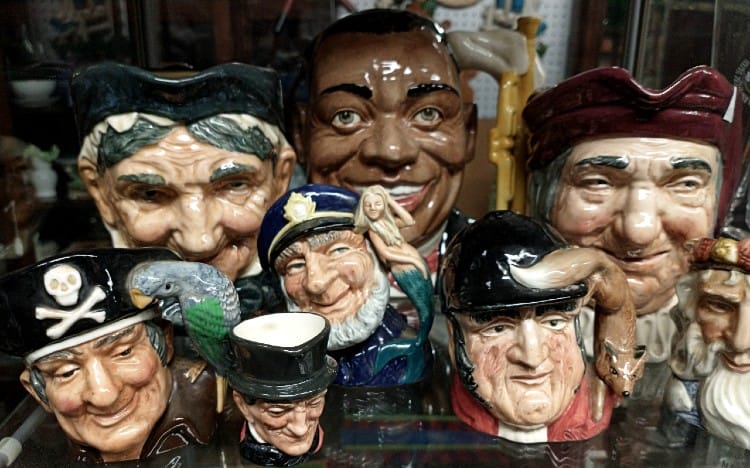

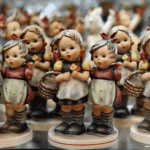
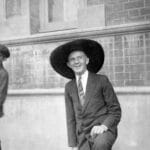
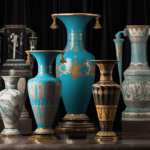
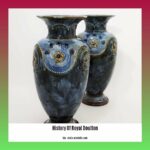











1 thought on “Raising a Tankard to the Past: A Spirited History of Toby Mugs”
Comments are closed.